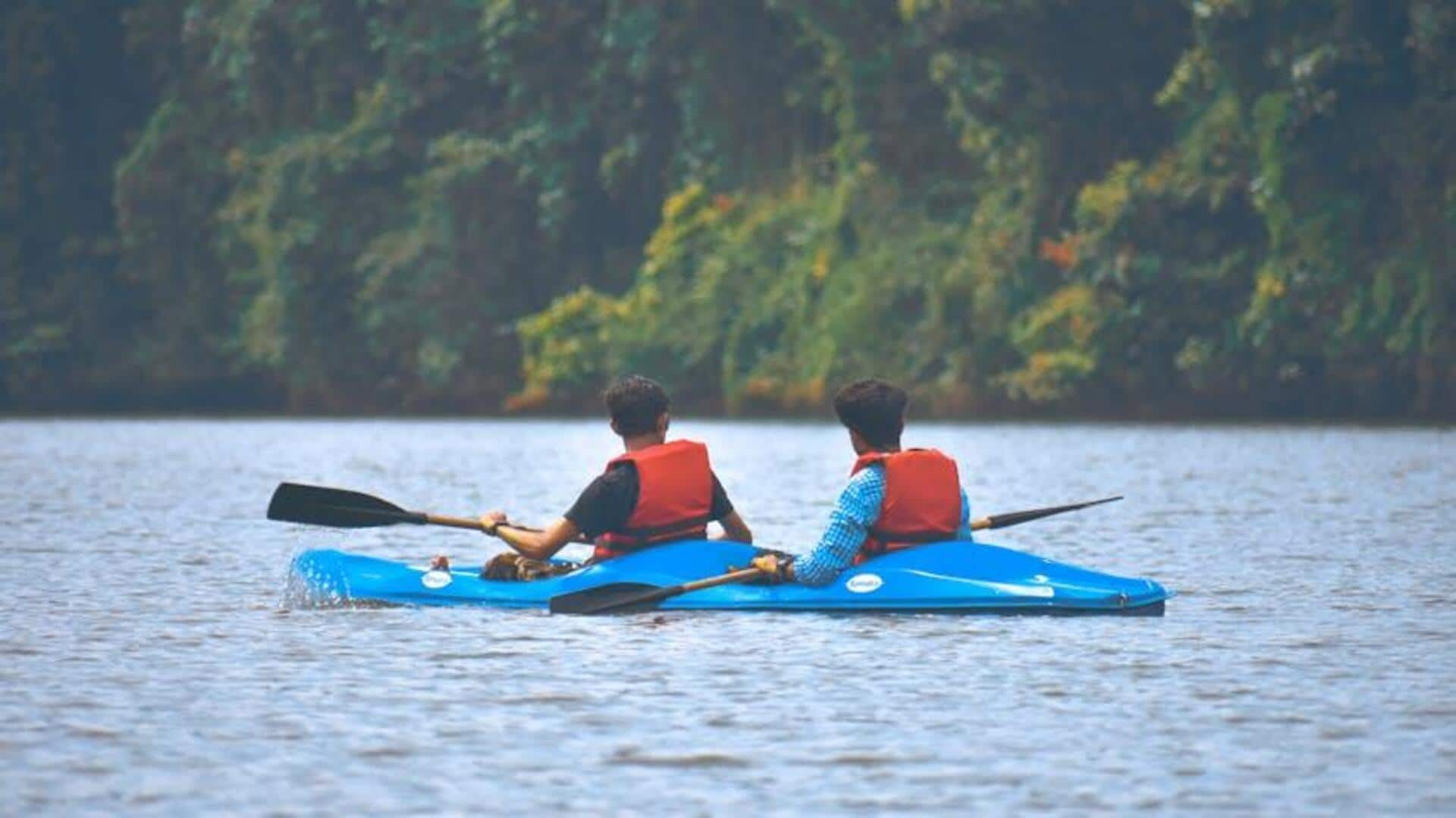
Kayaking in Western Ghats: Spots you can't miss
What's the story
The UNESCO World Heritage site Western Ghats hosts some of the most serene, hidden lakes ideal for kayaking. These lakes provide the perfect opportunity to explore nature's untouched beauty with a peaceful paddle. With the region's rich biodiversity and lush landscapes, the destination is ideal for adventure lovers looking for a calm break from the bustling city life. Here's all about kayaking these majestic hidden lakes of Western Ghats.
Lake spots
Discovering pristine lake locations
The Western Ghats also has a number of lesser-known lakes where you can have an amazing kayaking experience. Some popular spots are Pookode Lake in Kerala and Talacauvery Lake in Karnataka. These places are cushioned by thick forests and hills, which ensure paddlers have a stunning view and opportunity to witness a variety of wildlife. Kayaking in these untouched waters brings you closer to nature.
Timing tips
Best time for kayaking adventures
The best time for kayaking in the Western Ghats is the post-monsoon season, from October to March. This is when water levels are at their best and the weather is pleasant with cooler temperatures and less rainfall. Not only does this make paddling safer, but it also allows adventurers to enjoy clear skies and the vibrant greenery around the lakes.
Gear checklist
Essential gear for safe kayaking
When planning a kayaking trip in the Western Ghats' hidden lakes, it's important to have essential gear ready. You will need a sturdy kayak (preferably designed for lake paddling) along with safety equipment such as life jackets, helmets, and waterproof bags for personal belongings. Further, carrying navigation tools such as maps or GPS devices can help ensure you stay on course during your adventure.
Eco-friendly practices
Respecting local ecosystems
While kayaking through these stunning lakes, do your part to protect local ecosystems by following eco-friendly practices like refraining from littering or unnecessary disruption of wildlife habitats. Sticking to specified routes minimizes environmental damage and promotes sustainable tourism practices in this delicate expanse of natural beauty.